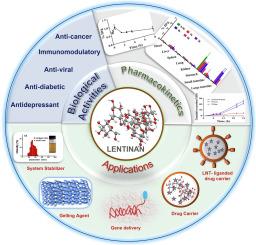Lentinan: An unexplored novel biomaterial in drug and gene delivery applications
Abstract
Recently, lentinan (LNT) has been utilized for its diversified potential in research with an extended role from nutritional or medicinal applications to a novel biomaterial. LNT is a biocompatible, multifunctional polysaccharide employed as a pharmaceutical additive in engineering customized drug or gene carriers with an improved safety profile. Its triple helical structure containing hydrogen bonding offers more extraordinary binding sites for the attachments of dectin-1 receptors and polynucleotide sequences (poly(dA)). Hence, the diseases expressing dectin-1 receptors can be specifically targeted through so-designed LNT-engineered drug carriers. Gene delivery using poly(dA)-s-LNT complexes and composites has exhibited greater targetability and specificity. The achievement of such gene applications is assessed through the pH and redox potential of the extracellular cell membrane. The steric hindrance-acquiring behavior of LNT shows promise as a system stabilizer in drug carrier engineering. LNT shows viscoelastic gelling behavior temperature-dependently and therefore needs to explore more to meet topical disease applications. The immunomodulatory and vaccine adjuvant properties of LNT help in mitigating viral infections too. This review highlights the new role of LNT as a novel biomaterial, particularly in drug delivery and gene delivery applications. In addition, its importance in achieving various biomedical applications is also discussed.


 求助内容:
求助内容: 应助结果提醒方式:
应助结果提醒方式:


